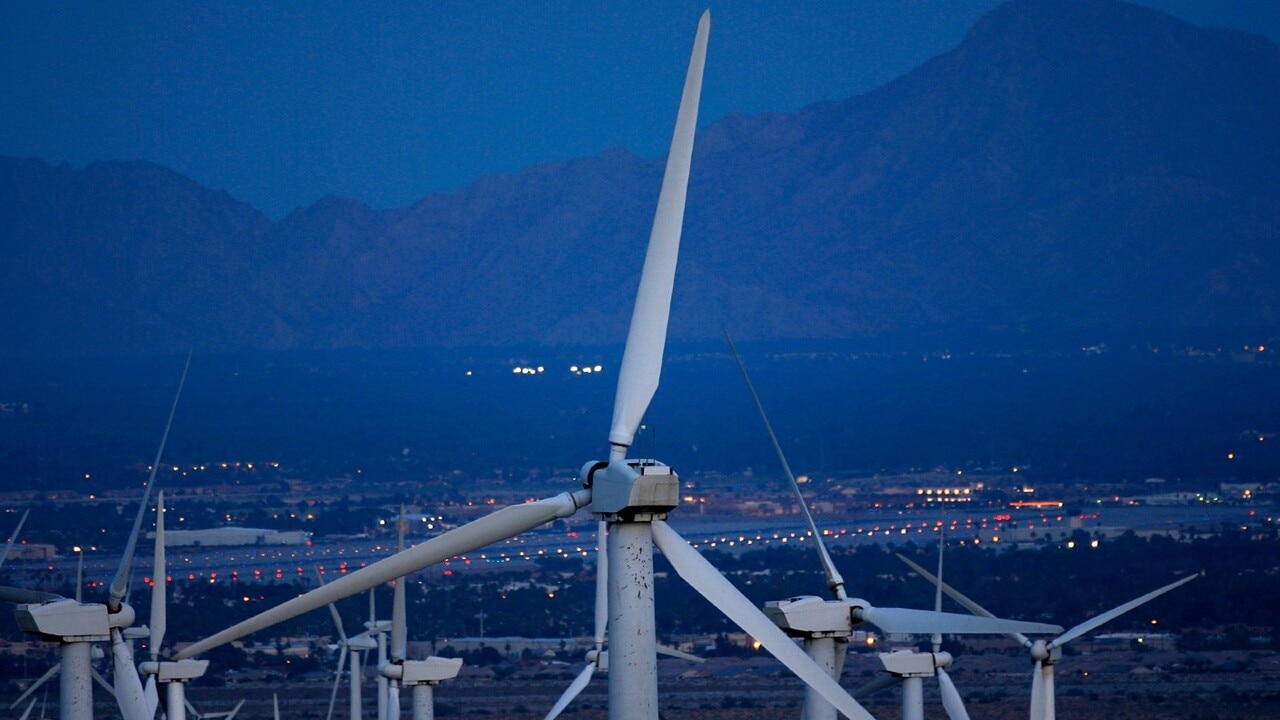‘Phantom dwellings’ in crosshairs as NSW looks to propel onshore wind projects
The NSW government is considering new rules to curtail landowners’ powers to block the development of onshore wind farms based on potential future houses.

NSW Labor is considering new rules to curtail landowners’ powers to block the development of onshore wind farms based on potential future houses, in moves that are set to inflame tensions in the regions over the pace and the growth of the renewables transition.
With projects across the state stymied by rural opposition, the Minns government has told green industry officials eager for more details of its new wind power regime that landowners’ rights are on the table.
Premier Chris Minns is under pressure to accelerate the development of renewable energy, with planning laws shaping up as one of the worst inhibitors.
So-called “phantom dwellings” have been a popular tactic used to oppose developments.
The current rules allow landowners to inform wind developers that they intend to build a dwelling on their property in the future. Residents who live within 8km of a wind turbine in NSW have to be consulted and compensated, and if enough phantom dwellings are mooted then projects can become unviable.
NSW Planning Minister Paul Scully has been working on an update of the renewables guidelines that developers have to comply with, and sources said the rules are close to being finalised.
While the details of the tweaks are unknown, senior officials have quietly assured developers that there will be movement on the phantom dwelling requirements.
Mr Scully said the government was working through extensive feedback.
“The draft guidelines, which were exhibited earlier in the year, focused on a range of issues such as visual impacts, dwelling entitlements and private agreement guidelines,” Mr Scully said.
“With over 400 submissions from stakeholders, including industry members, communities, local government and interest groups, we’ve had our work cut out. We are considering these submissions and working to see them finalised this year.”

Industry sources said they were cautiously optimistic but said NSW would need to act or risk slowing its transition strategy.
“They have to do something. The NSW government is pushing ahead with these Renewable Energy Zones but if they want any wind developments within them they are going to have to move on these setback rules and phantom dwellings,” one senior industry source told The Australian. He declined to be named as he is not authorised to talk to the media.
NSW has earmarked six areas where it plans to concentrate large-scale zero-emission projects so as to avoid unnecessary transmission construction, but several have been identified by industry – particularly the New England REZ – as facing substantial local opposition.
The South West REZ is seen as the most appealing as it is sparsely populated, minimising the possibility of planning roadblocks. The Australian in August revealed how the country’s largest renewable developers – Neoen, Origin Energy, Acciona Energia, Squadron Energy and Iberdrola – have zeroed in on the South West REZ, stretching from Murrumbidgee in the east to Buronga in the west.
While the South West REZ is likely to reach its full potential of 2.5GW, it is much smaller than the New England REZ, and NSW will need to develop all of the six regions if it is to meet its ambitious transition target. NSW has set a target of a 50 per cent reduction in emissions from 2005 levels by 2030. The state can ill-afford to lose community support and is unlikely to hammer through planning changes as tough as those recently implemented in Victoria.
Tamworth farmer Tim White, who opposes the construction of transmission lines, said changes would be viewed poorly.
“Any move to weaken the rights of communities to oppose anything is a disgrace,” Mr White told The Australian.
Victoria in March said it would limit the ability of opponents to object to new wind and solar developments by forcing them to appeal to the Federal Court – changes it said were necessary to accelerate the rollout of renewable energy.
Victoria, one of Australia’s most fossil fuel-dependent states, is struggling to meet its ambitious plan to have renewable energy generate 95 per cent of the state’s electricity, but the changes have alienated a number of regional communities.
Offshore wind is the cornerstone of Victoria’s transitional plan, but with only one project expected before 2030 – perhaps just months before the end of the decade – many expect the state may be forced to extend the lifespan of EnergyAustralia’s Yallourn coal power station.
Victoria is already facing an imminent energy crisis, with the country’s energy market operator warning of a looming gas shortfall. Victoria is Australia’s most gas-dependent state.







To join the conversation, please log in. Don't have an account? Register
Join the conversation, you are commenting as Logout